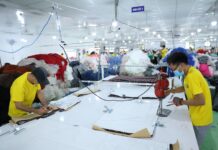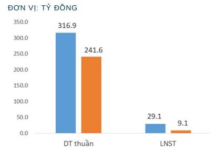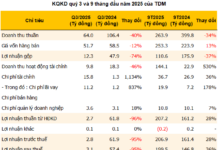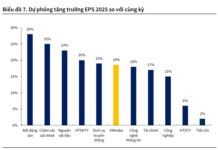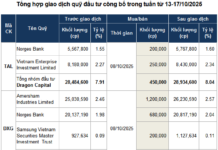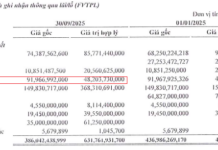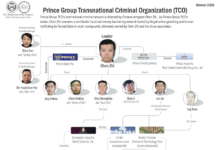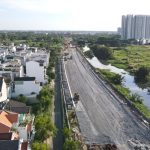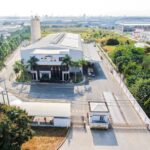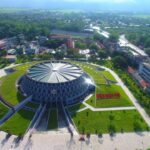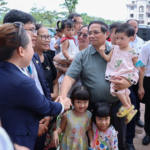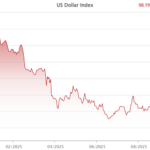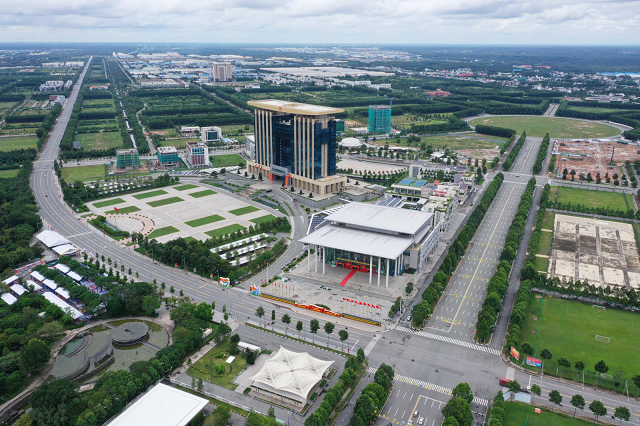 |
Towards 2050, Binh Duong aims to become an international-standard urban center. Photo: VGP
|
The vision for 2050 is to develop Binh Duong into a modern industrial and service center with regional and international stature, serving as one of the driving forces for the country’s economic development. The main growth drivers are industry, services, innovation, and a robust economy with high competitiveness…
GRDP per capita in 2030 is expected to reach approximately $15,800.
The decision outlines the general objective that by 2030, Binh Duong will become a centrally governed city and one of the dynamic and comprehensive development centers of Southeast Asia. It will lead in science, technology, and innovation, boasting a modern industrial and service center, along with a synchronous, intelligent, and sustainable socio-economic infrastructure and urban system. This development will follow a green growth model, adapting to climate change and protecting the ecological environment. Additionally, it will enhance the quality of life for its residents, building a prosperous, civilized, and modern society while ensuring national defense, security, and social order and safety.
Specific economic targets include an average economic growth rate of about 10% during 2021-2030, with a GRDP per capita of approximately $15,800 by 2030. The economic structure in 2030 is targeted as follows: the industry and construction sector will account for 64%; the service sector will contribute 28%; agriculture, forestry, and fisheries will make up 2%; and taxes on products minus subsidies will constitute 6%. The urbanization rate is aimed to be 88-90%, with a digital economy accounting for 30% of GRDP.
By 2030, the population is projected to reach 4.04 million (including 3.48 million permanent residents and 0.56 million converted residents). Other targets include a trained labor force rate of over 87%, with 40% holding degrees; a rate of schools meeting national standards of over 80%; 19 doctors per 10,000 people; 35 beds per 10,000 people; over 95% of the population participating in health insurance; and a multi-dimensional poverty rate of below 1.0%…
Five key tasks and breakthrough strategies for development
To achieve these goals, the Planning sets out five key tasks and breakthrough strategies:
First, regional cooperation and linkage for development
Binh Duong needs to coordinate with national development programs, the Southeast region, and neighboring localities to expand connectivity in transportation, especially links to seaports (Cai Mep Thi Vai and Can Gio), international airports (Tan Son Nhat and Long Thanh), and international border gates (Moc Bai in Tay Ninh and Hoa Lu in Binh Phuoc). Additionally, it should focus on connectivity in science and technology and human resources to create a driving force for a new development ecosystem and spatial connectivity in the dynamic southern region. Collaboration is also crucial in developing ecological urban corridors along the Saigon and Dong Nai rivers.
Emphasis should be placed on international connectivity infrastructure to enhance Binh Duong’s position in global production and service chains and make it a preferred destination for global enterprises in industries, high technology, and industrial services.
Second, innovation in the development ecosystem
Successfully transition the growth model from breadth to depth through innovation, modern science and technology, and widespread digitalization in production and governance to enhance growth quality and effectiveness.
Develop a new ecosystem focused on innovation, with adequate land funds, technical infrastructure, and social infrastructure. Prioritize high value-added industries and sectors, reduce production costs, and proactively produce and export goods with high-tech applications, fully exploiting the province’s outstanding potential and competitive advantages.
Third, social and human resource development
Enhance the quality of human resources through training, promote the development of cultural industries, and establish breakthrough mechanisms to attract and retain talent. Build an educational foundation for human resource training that fosters connections between the state, schools, and businesses.
Create an ecosystem that originates from general education, employing modern and advanced educational models and methods. Shape a learning environment at the general and university levels that aligns with the talent needs of businesses and the market.
Combine knowledge acquisition with self-development support, research, business establishment, and the cultivation of an entrepreneurial and innovative ecosystem. Increase investment in cultural development to drive economic growth and ensure that all citizens have access to advanced cultural and social services.
Fourth, developing a green Binh Duong
Promote the greening of the economy (green production, consumption, transportation, infrastructure, urban and rural areas) through the leadership of science and technology, thereby establishing a harmonious relationship between humans, nature, and society.
Develop green urban spaces and attractive, eco-friendly infrastructure as a distinctive feature of Binh Duong’s urban landscape. Prioritize investments in solutions for ecological environment protection, sustainability, renewable energy systems, waste recycling, and wastewater treatment…
Fifth, developing dynamic spaces
Divide the province into three dynamic spatial areas:
Area 1 (including Thu An and Di An cities): Rehabilitate and upgrade urban areas; relocate outdated and environmentally polluting production and industrial facilities to the province’s northern region. Utilize available spaces for new urban models oriented towards Transit-Oriented Development (TOD) and supplement social infrastructure to elevate Thu An and Di An into modern cities with a high quality of life.
Area 2 (including Thu Dau Mot, Tan Uyen, Ben Cat cities, and Bau Bang district): Focus on innovation, advanced technology, community services at the regional level, and smart cities as pillars for provincial growth.
Area 3 (including Bac Tan Uyen, Phu Giao, and Dau Tieng districts): Establish new-generation industrial parks and attract the development of eco-friendly urban-industrial-service models. Conserve and develop ecological corridors along the Saigon, Dong Nai, and Thi Tinh rivers, increase green coverage, and promote renewable energy.













